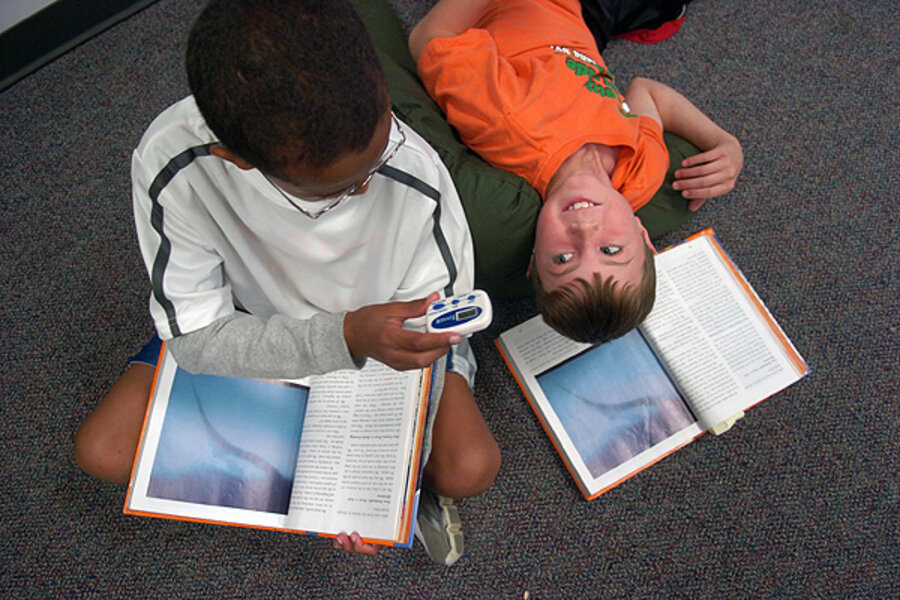Race to the Top: Which states made the list of finalists?
Loading...
States competing for billions of dollars in education stimulus funding found out today whether they’re still in the running for the “Race to the Top.”
Out of 41 applications, 15 states and the District of Columbia have made the cut so far. They’ve been invited to Washington to make the case that they will be the best trailblazers for innovation and reform in K-12 public schools.
The competition has been a catalyst “to dramatically reshape America’s educational system ... prompting states to think deeply about how to improve the way we prepare our students for success in a competitive 21st century economy,” Secretary of Education Arne Duncan said in announcing the first round of finalists.
The finalists are: Colorado, Delaware, the District of Columbia, Florida, Georgia, Illinois, Kentucky, Louisiana, Massachusetts, New York, North Carolina, Ohio, Pennsylvania, Rhode Island, South Carolina, and Tennessee.
A high bar?
The US Department of Education will announce winners for the grants – totaling $4.35 billion – starting in April, with a second round of applications being considered this summer. The bar is set high and the number of winners in this first round is expected to be small, in the single digits, Secretary Duncan said. President Obama has proposed an additional $1.35 billion in his budget for a third round of such grants.
Some observers say the finalist list would be shorter if the Education Department truly wanted to set a high bar. It includes a lot of “marginally reform-minded states,” says Frederick Hess, director of education policy studies at the American Enterprise Institute.
A number of states have passed reforms – to lift caps on charter schools or to allow the linkage of teacher evaluations to student test scores, for instance – partly to compete for the grants.
Yet some states that have made reform efforts, such as California and Michigan, did not make the finals. It remains to be seen whether they’ll reapply for the second round of grants. (Click here to read more about California's major education reform efforts.)
States are being judged on past reforms and how strongly they are planning to pursue changes in four areas:
- Standards to prepare students for college or careers in a global economy.
- Measuring and improving student learning by building better data-tracking systems.
- Recruiting and retaining effective teachers and principals.
- Turning around the worst-performing schools.
What some finalists have done
Tennessee, one of the finalists, passed its First to the Top Act in January. One of the new requirements is that half of evaluation criteria for teachers be based on student achievement data, including standardized tests and statistical estimates of how much gain a given teacher’s students have made – a controversial issue in many states and school districts.
Rhode Island, another finalist, stirred up controversy recently when the Central Falls district fired all of its high school’s teachers in a state-approved plan to turn the school around after it was designated one of the worst in the state. (Click here to read the Monitor's coverage of the Central Falls flap.)
Beyond the states that ultimately win the money, Race to the Top is part of a politically strategic shift to more competitive grants by this administration, says Joe Williams, executive director of Democrats for Education Reform.
States and Congress are “getting used to this notion that [the federal government] is not just going to keep putting money into school systems that are not serving kids the way the nation expects them to," says Mr. Williams. "The public will support more money for education but only if they feel like it’s being put to good use.”





